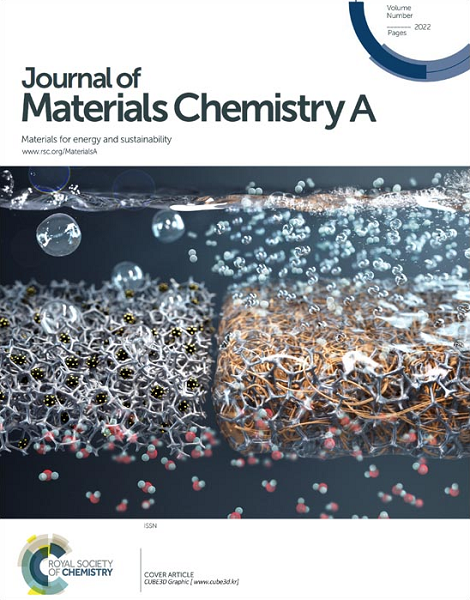Chemically bonded interface modulated S-scheme charge transfer on Sb2S3@ZnIn2S4 core-shell heterostructures for boosted catalytic activity toward nitrogen photofixation
IF 10.7
2区 材料科学
Q1 CHEMISTRY, PHYSICAL
引用次数: 0
Abstract
The explore of efficient strategies for nitrogen photofixation driven by visible light at room temperature and atmospheric pressure is still highly desirable until now but remains a great challenge. In this study, hierarchical Sb2S3@ZnIn2S4 core-shell samples were synthesized through a hydrothermal reaction, in which ultrathin ZnIn2S4 nanosheets were tightly and uniformly wrapped on the surface of Sb2S3 nanorods. Systematic characterization revealed that the chemically bonded interface in Sb2S3@ZnIn2S4 core-shell heterostructures was critical to the speedy charge separation, and then gave rise to significant enhancement of photocatalytic performance for nitrogen photofixation. The optimal nitrogen photofixation system, namely, Sb2S3@ZnIn2S4-75, exhibited excellent performance with produced ammonia concentration of 15.96±0.97 mg·L‒1 after visible light irradiation for 40 min, which was approximately 1.88 and 7.19 times higher than those of relevant ZnIn2S4 and Sb2S3, respectively. Moreover, a S-scheme charge transfer route on Sb2S3@ZnIn2S4 core-shell heterostructures was proposed based on the band structures analysis, in situ irradiated X-ray photoelectron spectroscopy (ISI-XPS) investigation, noble metal deposition, and density functional theory (DFT) simulation. This work gave a useful insight into the development of efficient photocatalysts for boosted photocatalytic activity toward nitrogen photofixation.求助全文
约1分钟内获得全文
求助全文
来源期刊

Journal of Materials Chemistry A
CHEMISTRY, PHYSICAL-ENERGY & FUELS
CiteScore
19.50
自引率
5.00%
发文量
1892
审稿时长
1.5 months
期刊介绍:
The Journal of Materials Chemistry A, B & C covers a wide range of high-quality studies in the field of materials chemistry, with each section focusing on specific applications of the materials studied. Journal of Materials Chemistry A emphasizes applications in energy and sustainability, including topics such as artificial photosynthesis, batteries, and fuel cells. Journal of Materials Chemistry B focuses on applications in biology and medicine, while Journal of Materials Chemistry C covers applications in optical, magnetic, and electronic devices. Example topic areas within the scope of Journal of Materials Chemistry A include catalysis, green/sustainable materials, sensors, and water treatment, among others.
 求助内容:
求助内容: 应助结果提醒方式:
应助结果提醒方式:


